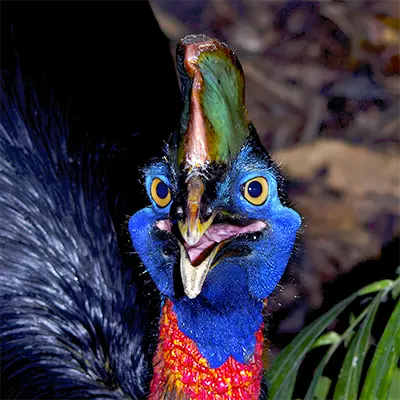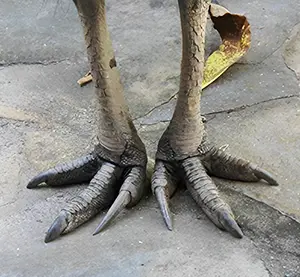Cassowary Attack: World's Deadliest Bird

The cassowary, a huge 2 meter-tall bird renowned for its with incredible speed, powerful kicks, and razor-sharp claws—earning it the title of the world’s deadliest bird. Found in the tropical rainforests of Australia and New Guinea this prehistoric-looking bird prefers to avoid conflict but is deadly if provoked and it can unleash its lethal defences with astonishing force.
How Does a Cassowary Attack?

Photo: Cassowary's 12 cm (5 in) long claws
When provoked, a cassowary launches itself into the air and strikes forward with its muscular legs in a swift and precise attack. Its inner toe is armed with a razor-sharp, dagger-like claw, measuring up to 18 cm (7 inches) long, capable of delivering deep puncture wounds, brutal slashing cuts, and even fatal injuries. Its lightning-fast kicks can tear through flesh, break bones, and severely wound its target. Once in attack mode, a cassowary is relentless, chasing intruders at speeds of up to 50 km/h (31 mph), using its powerful legs not just for striking, but also for rapid pursuit.
Fatal Encounters and Attack Statistics
Cassowary attacks are rare but can be deadly. In 2019, a Florida man was killed by his pet cassowary—the first recorded fatal attack since 1926, when a teenage boy was fatally injured after striking a cassowary with a club.
Cassowary Attack Video
Each year, over 200 cassowary attacks are reported in Australia, with around 70% of these incidents occurring when humans attempt to feed them. When cassowaries associate people with food, they become aggressive and demanding, increasing the risk of dangerous encounters.
Warning Signs: When a Cassowary Feels Threatened
While the cassowary is the most dangerous bird on the planet, it is not naturally aggressive. It prefers avoiding confrontations, especially with humans. But it is fearless and will stand its ground when they feel threatened. If approached, a cassowary may:
• Stretch itself to full height, fluffing its feathers to appear larger.
• Hiss loudly as a warning signal.
• Lower its head and emit deep booming sound, a sign of extreme agitation.
• Display brighter neck pigmentation and visibly tremble before launching an attack.
Don’t Feed the Cassowary!
Of the 200 cassowary attacks reported in Australia each year, over 70% occurred while humans were attempting to feed these birds. This is because cassowaries become assertive and demanding when they associate humans with food handouts. So don’t feed the cassowary!
All Rights Reserved. (Last Updated: Mar 29, 2025)